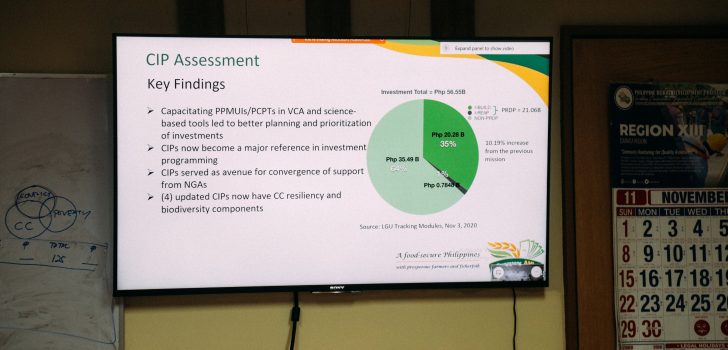
Leveraging support through Convergence
The past six months have been challenging for many government agencies especially with regards to the continuation of project implementation amidst the pandemic.
The COVID-19 pandemic amplified the need for a stronger support system for different government agencies to address the needs of the public. This is where convergence plays an important role.
The Department of Agriculture Philippine Rural Development Project through its I-PLAN component takes the lead in bringing different agencies together to support farmers through convergence initiatives and the use of commodity investment plans or CIP’s.
The Mindanao cluster has recorded a total of 867 subprojects totaling P35.48 billion from non-PRDP subprojects through line agencies like the DILG which has the highest investment of P8.51 billion, followed by the DPWH with P6.26 billion, and Local Government Units with P6.02 billion investments. This is a result of the use of CIP’s and convergence among the different sectors.
Prior to the pandemic, the I-PLAN component has been conducting series of stakeholder consultations in order to provide a venue for different lead agencies, traders, private institutions, and farmers to interact, discuss, and address the existing gaps within the value chain.
One of the major impacts of this convergence is the leveraging of support to farmers where duplications of interventions are avoided and where complimentary needs of farmers are provided by different agencies instead.
Cooperatives like Household Multi-Purpose cooperative (HMPC) in the Municipality of Antipas in North Cotabato is a great example of how convergence enabled them to have a strong foundation that allows them to continue their operations despite the challenges brought about by the pandemic.
Some of the agencies that provided support to HMPC are the Local Government Unit of Antipas, ACDI/VOCA which provided them solar drying facilities, Kennemer International which is their institutional buyer, the Department of Agriculture (DA) through Bottom-up Budgeting Program, the Philippine Rural Development Project (PRDP) through the enterprise support, and the Armed Forces of the Philippines (AFP) which secured the peace and order in their areas of operations.
It is also noteworthy that Mindanao cluster’s institutionalization and mainstreaming of the use of CIP’s has translated into 374 subprojects for both the I-BUILD and I-REAP components of DA-PRDP.
These investment plans have been translated into 249 I-BUILD subprojects totaling P17.848 billion which consist of farm-to-market road (FMR), FMR with bridges, potable water supply, post-harvest facilities, and communal irrigation system. For the I-REAP, a total of 125 subprojects totaling P784.84 million are created for micro, small, and medium enterprise.
Commodity investment plans play a vital role in identifying the necessary infrastructure and enterprise development subprojects that can be funded by DA-PRDP with counterparts from the local government units (LGU), as well as the basis for other line agencies interventions.
Duplication of subprojects are now prevented because through convergence different agencies can easily check what interventions have already been given and in which area they can pour additional support. (JOY M. MONTECALVO)
